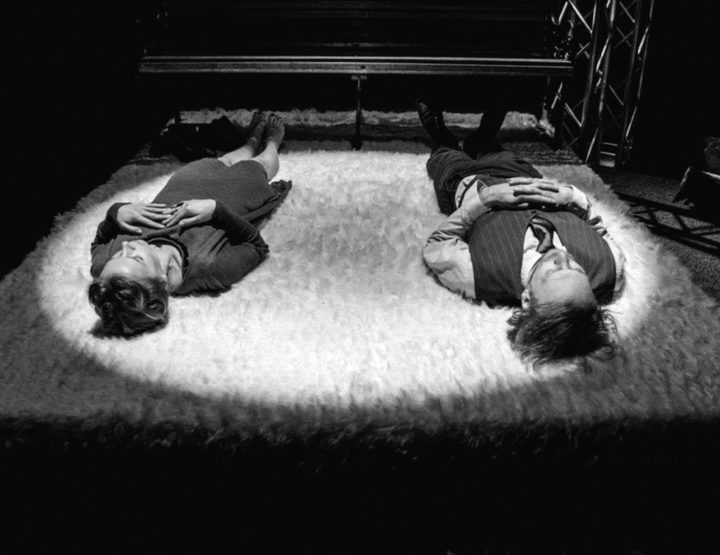I started to read this novel on a long train journey, and I nearly missed my station. The initial impression was really weird: I felt almost physical disgust, and at the same time was so fascinated by the text that I could not put the book down.
I am now translating Rehepapp. It should come out some time near All Souls’ Day, when it’s dark over here, and the world is full of muddy slush, wet or frozen leaves and desolation.
Old Barny’s world, in my opinion, is quite acceptable to Finns. After all, our Novembers are even darker, and the weather is at least as dismal as in Estonia. November weather in the novel is described with immense poetic beauty – I have hardly seen it described so powerfully before. Old Barny’s mythological world is historically familiar to Finns: we have goblins (kratt – we even have the same word) too, and our dark forests are inhabited by all sorts of dreadful creatures. We certainly have our share of various bugaboos and evil spirits, although perhaps we don’t have quite as many stories of getting the upper hand in our dealings with Old Nick and other ghostly beings.
We revere the souls of our ancestors just as you do in Estonia: we prepare the sauna for them on All Souls’ Day and offer them food. So the ethnographical background is not so different, despite the fact that most such things have been forgotten. We recognise the wrath against the masters in their manorial houses, and although we never had serfdom, the Finnish torpparilaitos resembles corvée.
What, then, if anything, would a Finn find difficult to understand in the novel?
We are very serious people. It is possible that someone will think: so this is what Estonians are like! I hope, however, that the way the novel exaggerates and stresses the worst side of a human being, will have another kind of effect. The powerful focus on the deadly sins of selfishness and greed – expressed here by stealing – made me think to myself: yes, this is what human beings are like! Or even: so this is what I am! This is naturally very hard to admit to oneself.
But seriously (I’m Finnish – remember!) – stealing is depressingly widespread in our civilised societies. All sorts of things are being stolen in Old Barny’s world, just as in ours. Stealing goes on in various ways too, in Estonia and everywhere else as well. Bosses use company cars for personal business, or use their expense accounts to wine and dine friends and relatives. During working hours, people make personal phone calls, surf the Internet or go shopping. Filling in our tax returns, we try to find ways to cheat a little, or not so little. The entire society, urged by its materialistic way of life, steals from nature and future generations.
Human greed and revolting pragmatism are easier to tolerate when set in the distant past: in the society of manor houses and their lords, and amongst fairy tale creatures. It could be, of course, that someone might be disgusted precisely for that reason, thinking that it is a fairy tale, and nothing else, as in Tove Jansson’s reversed Moomintrolls.
The goblins and other treasure hunters and guardians in Old Barny’s world mostly belong in the tradition of Western Finland. It would be nice to introduce some examples of Western Finnish dialect, but this is very difficult for me, since I come from the eastern parts, and still live in Lappeenranta, South Karelia. Not that I want to stress the regional aspect anyway.
The biggest problem is certainly stylistic. How to preserve in Finnish all those intertwining levels and styles, so important in the novel: black humour and deadly seriousness; fairy-tale mythology on the one hand, and general human (or inhuman) nature and contemporaneity on the other. I don’t want the text to look too ethnographic. The language should contain the clarity and directness of fairy tales and the world view of those people of distant times, and at the same time it should demonstrate modern usage in all its naiveté, e.g. as in advertising. Then there is the abundance of four-letter words that naturally have equivalents in Finnish. They just have to be found from somewhere, along with other terms that do not happen to belong in the translator’s everyday vocabulary.
Every translation remains an interpretation, and thus I find it difficult to analyse a book that I am still busy with. One shouldn’t talk about unfinished work. Nevertheless, I’d very much like the translation to at least convey what I feel when reading the text: the beauty of ugliness, lyricism of horror, and the charm of disgust.
© ELM no 14, spring 2002
Rehepapp: the beauty of ugliness
By Kaisu Lahikainen
–
Share:



